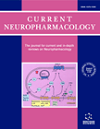
Full text loading...
We use cookies to track usage and preferences.I Understand
Neurodegenerative diseases such as Alzheimer’s, Parkinson’s, and amyotrophic lateral sclerosis cause damage and gradual loss of neurons affecting the central nervous system. Neurodegenerative diseases are most commonly seen in the ageing process. Ageing causes increased reactive oxygen species and decreased mitochondrial ATP generation, resulting in redox imbalance and oxidative stress. Oxidative stress-generated free radicals cause damage to membrane lipids containing polyunsaturated fatty acids, leading to the formation of toxic lipid aldehyde products such as 4-hydroxynonenal and malondialdehyde. Several studies have shown that lipid peroxidation-derived aldehyde products form adducts with cellular proteins, altering their structure and function. Thus, these lipid aldehydes could act as secondary signaling intermediates, modifying important metabolic pathways, and contributing to the pathophysiology of several human diseases, including neurodegenerative disorders. Additionally, they could serve as biomarkers for disease progression. This narrative review article discusses the biological and clinical significance of oxidative stress-mediated lipid peroxidation-derived lipid aldehydes in the pathophysiology of various neurodegenerative diseases.

Article metrics loading...

Full text loading...
References


Data & Media loading...

